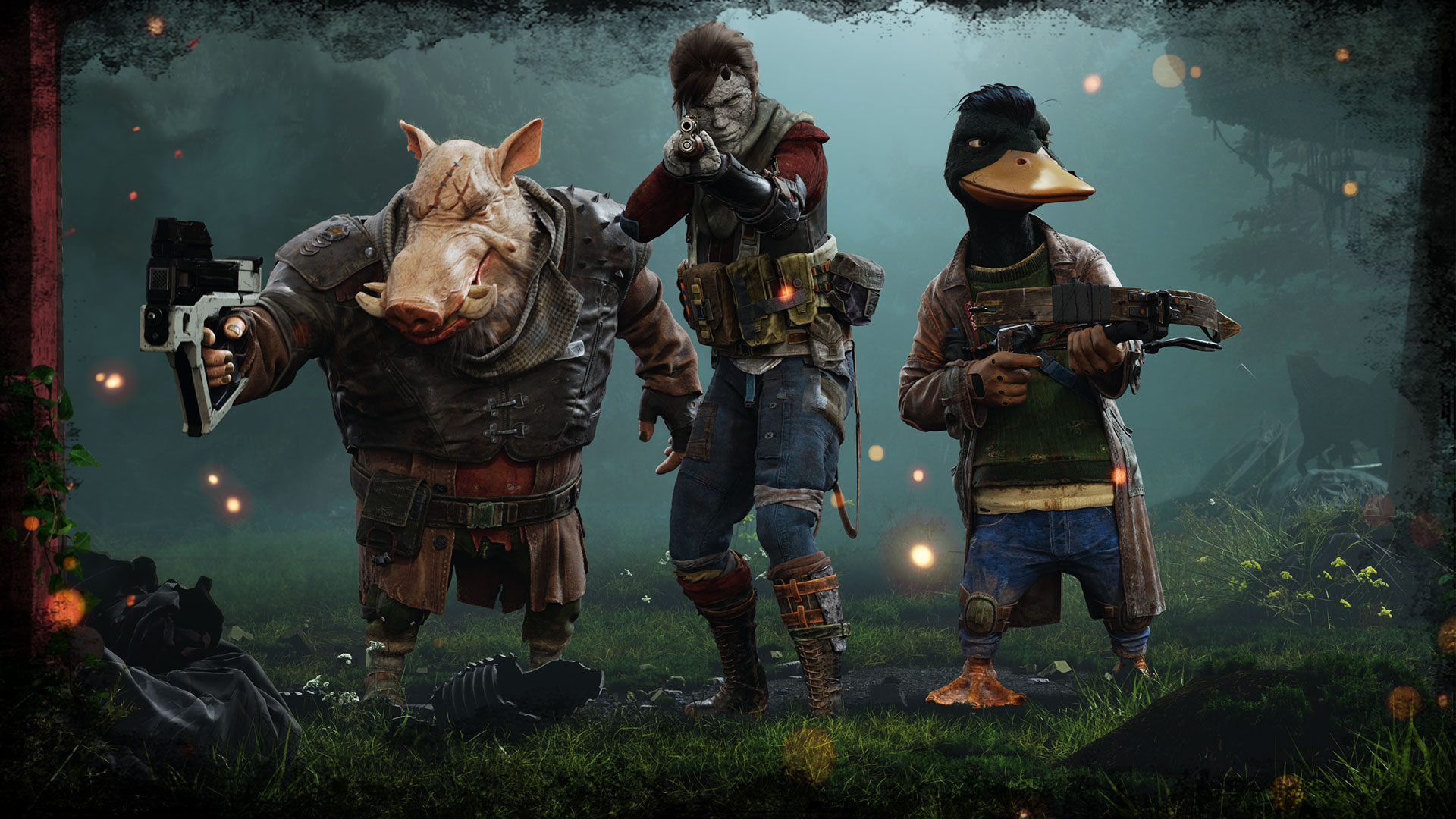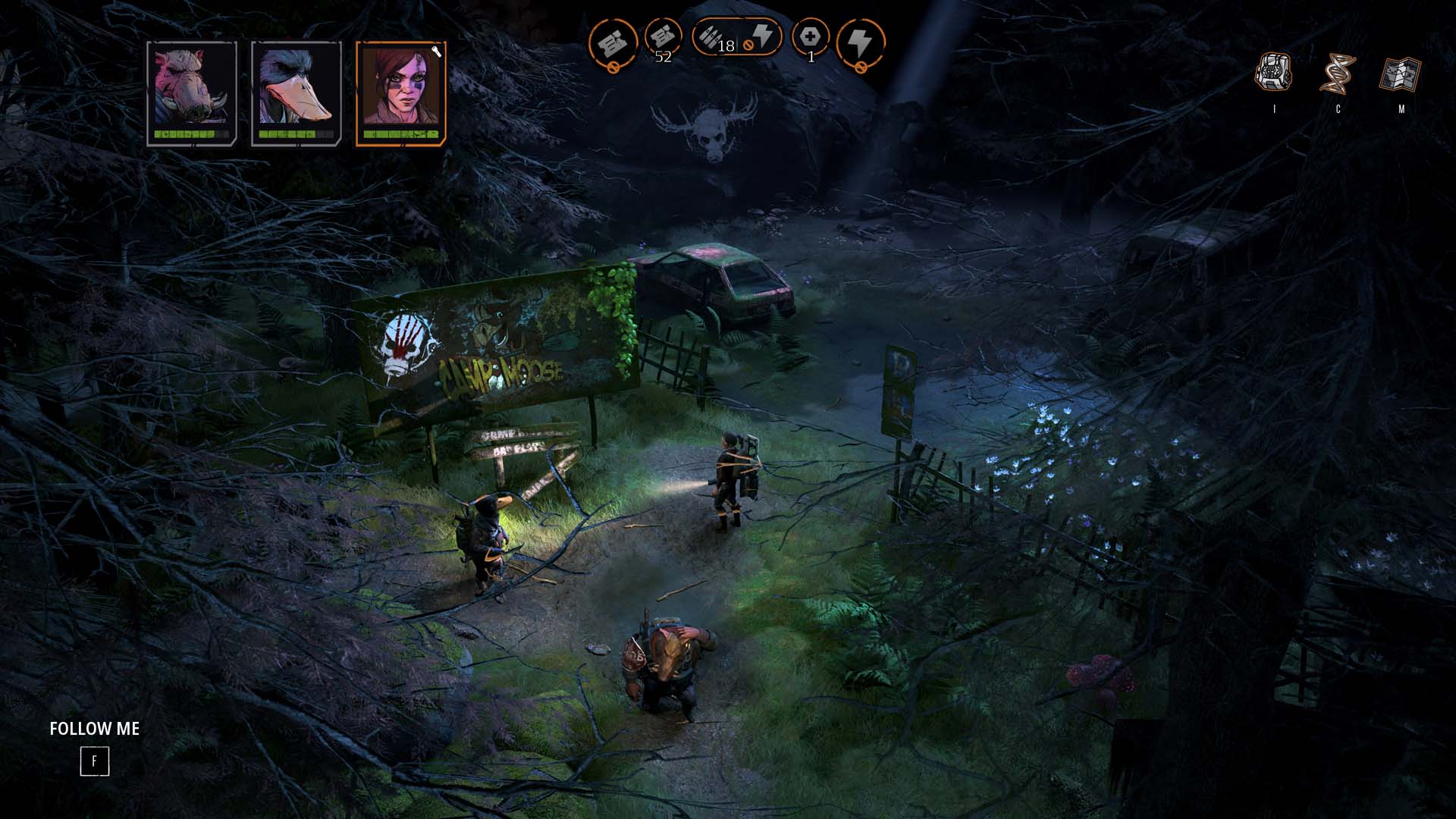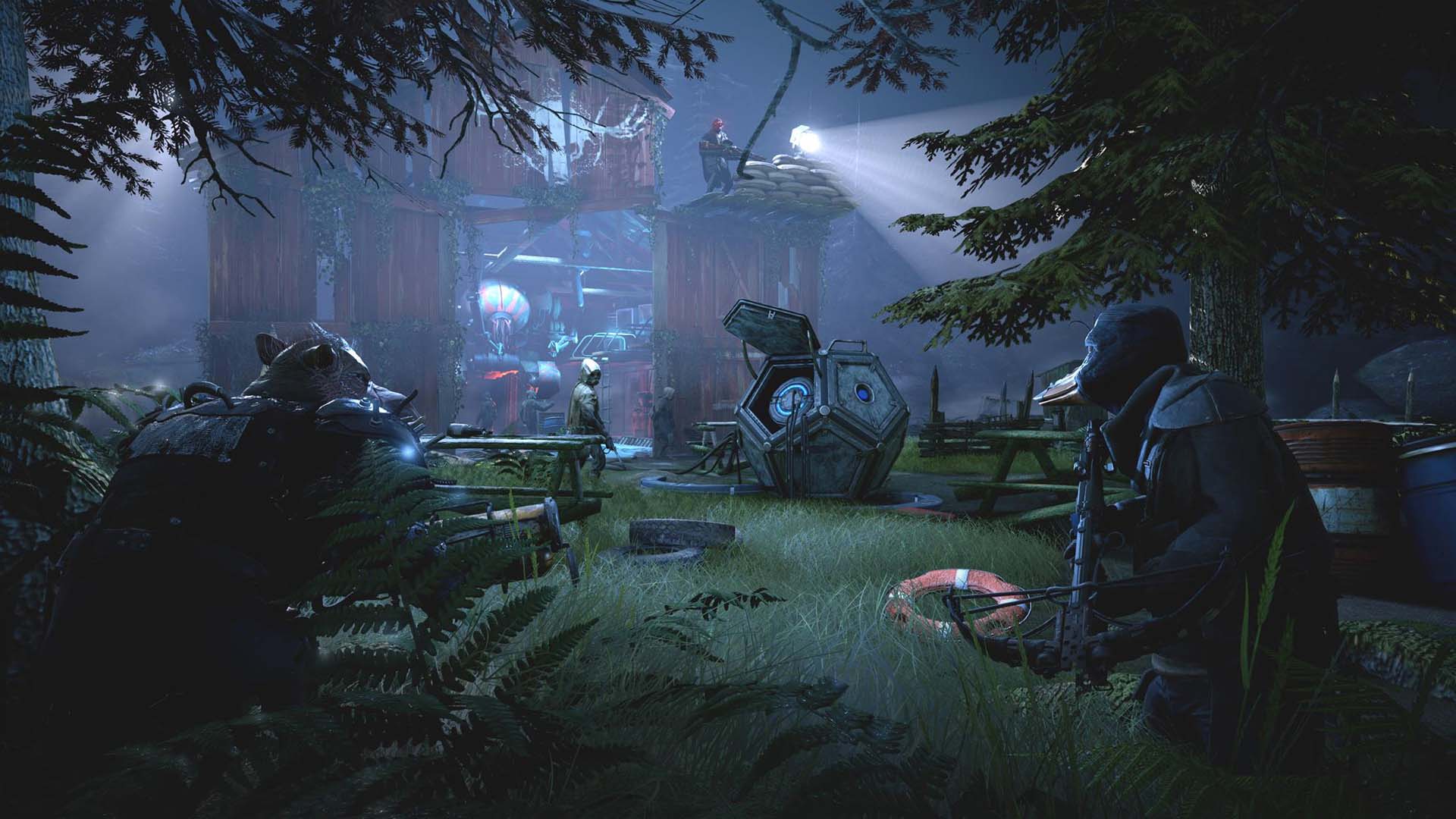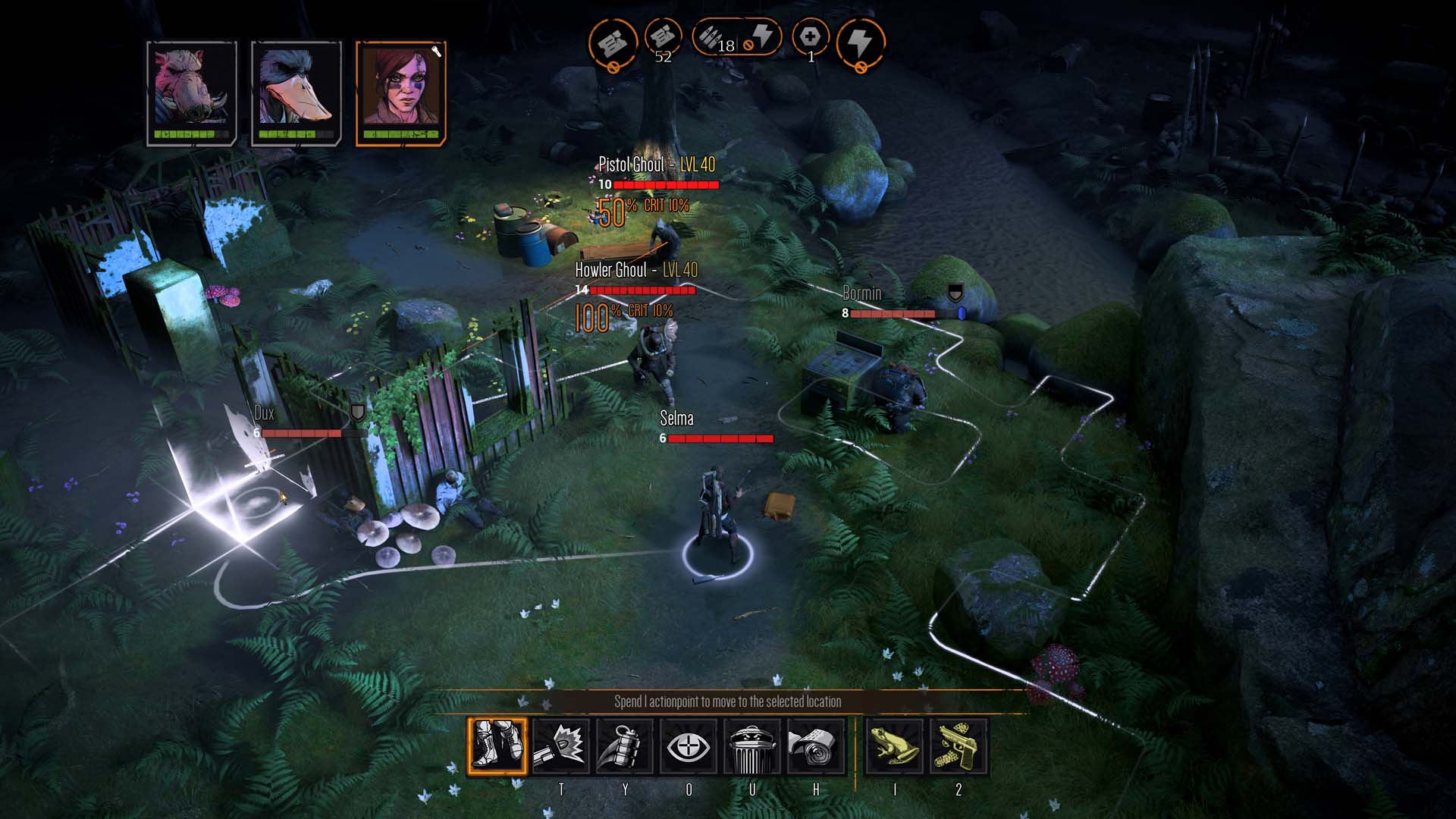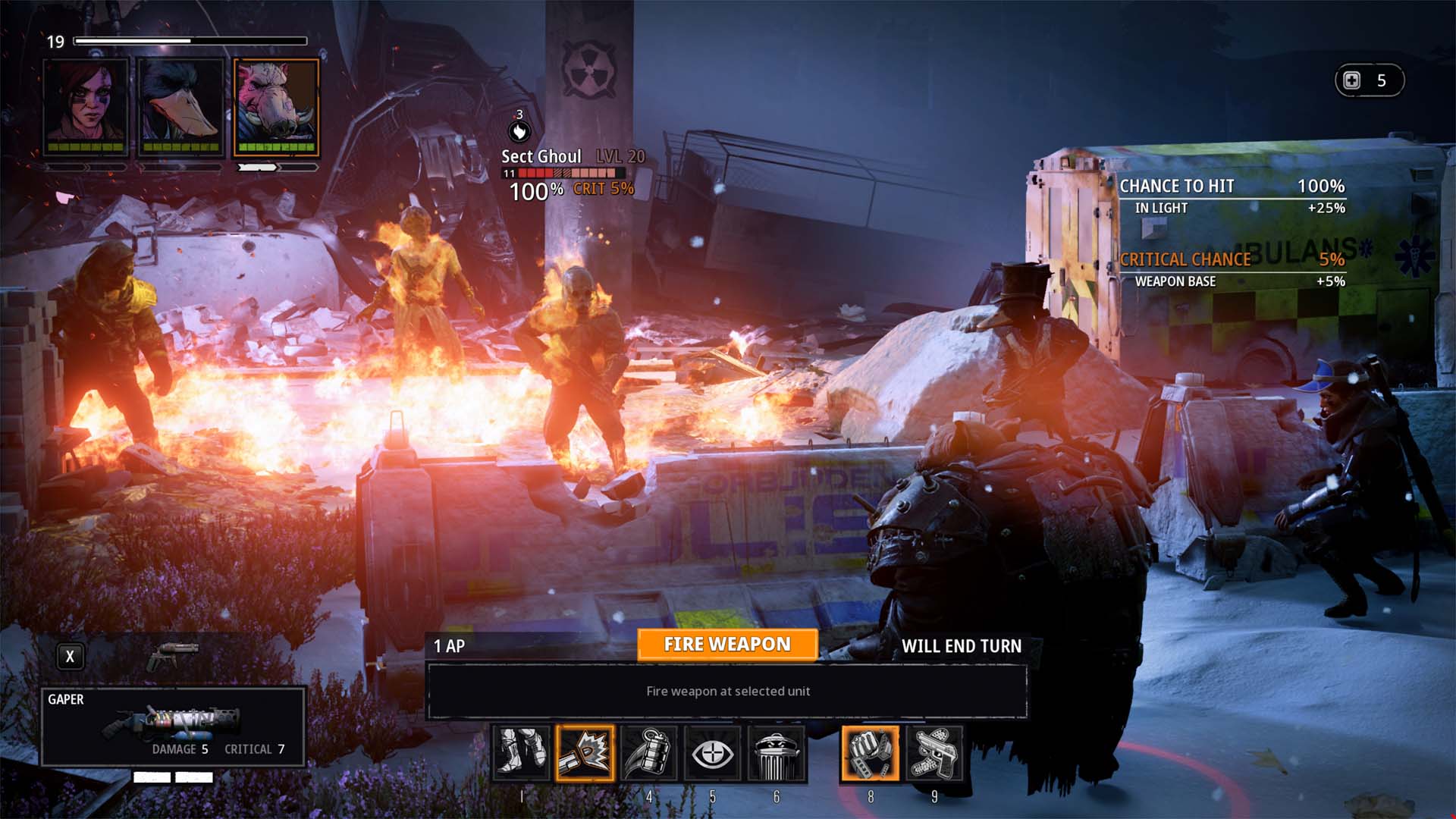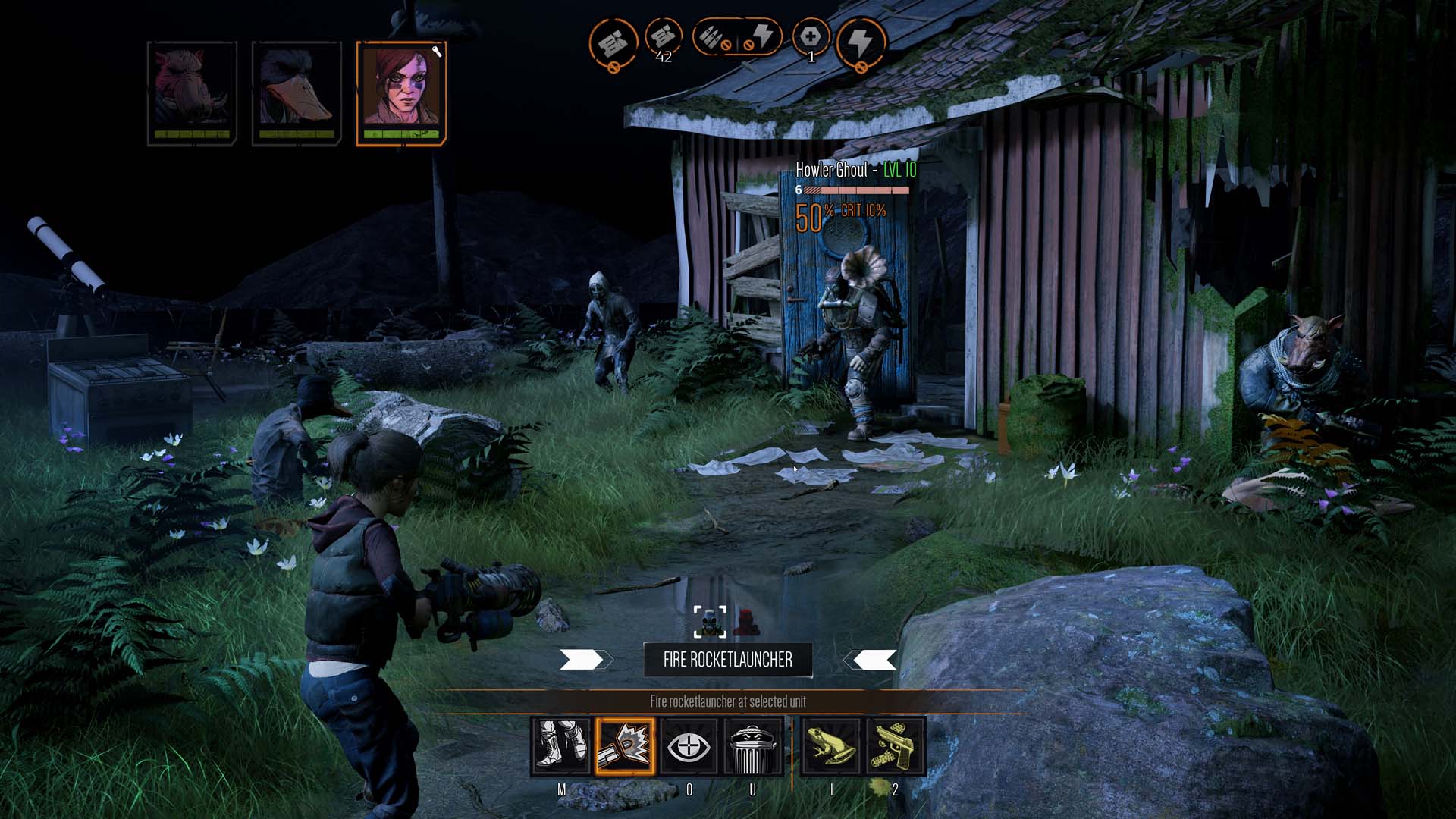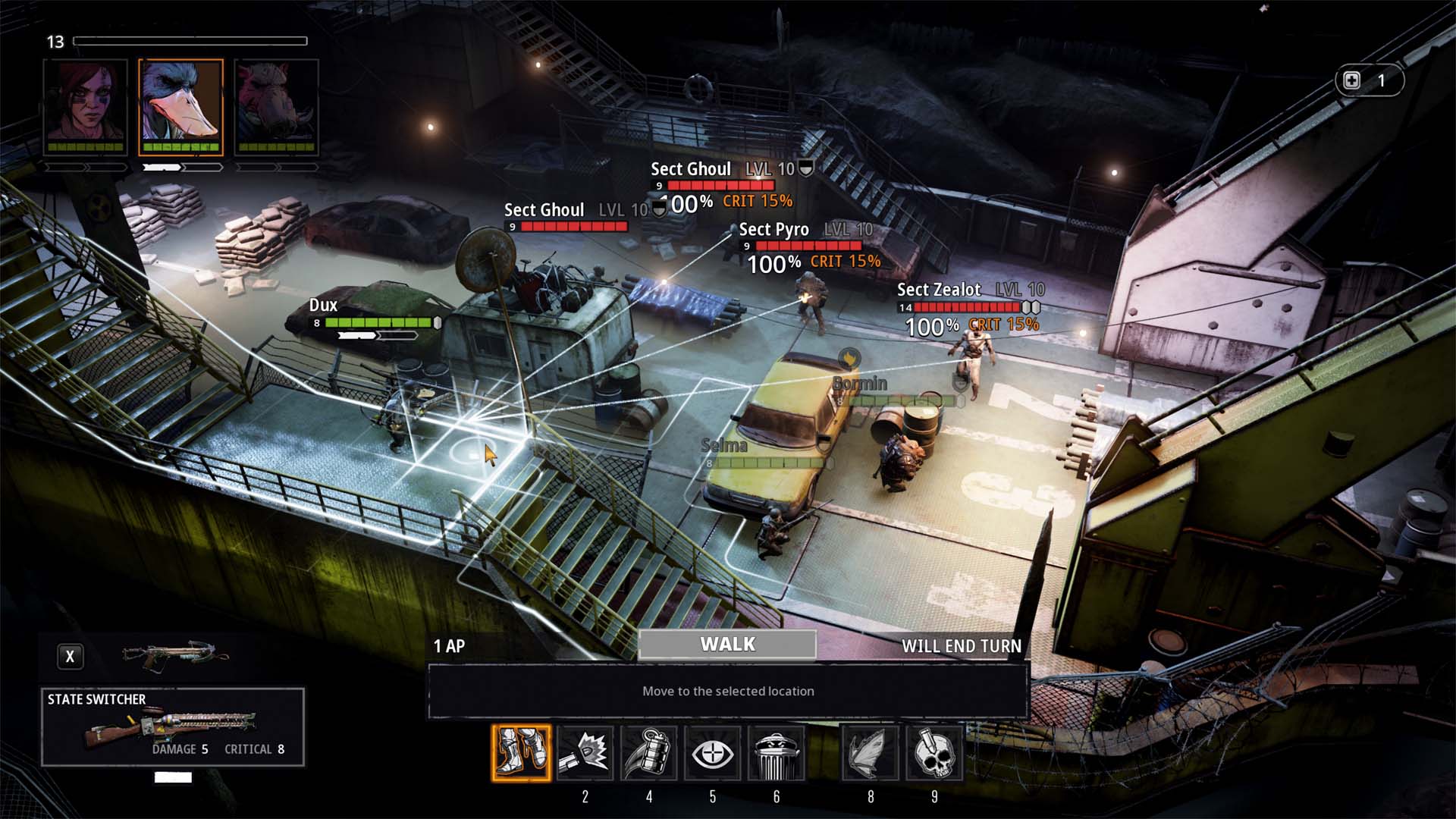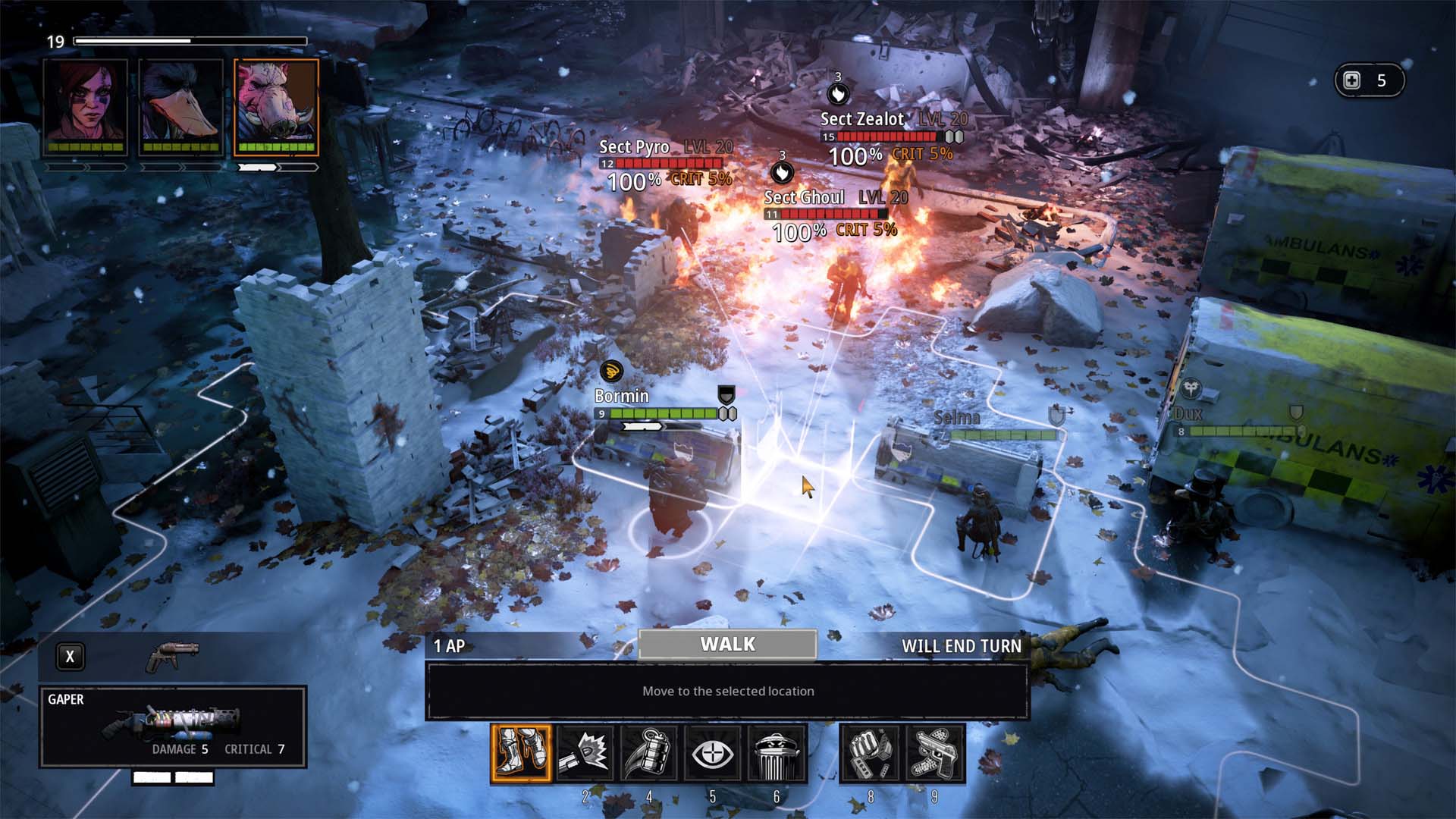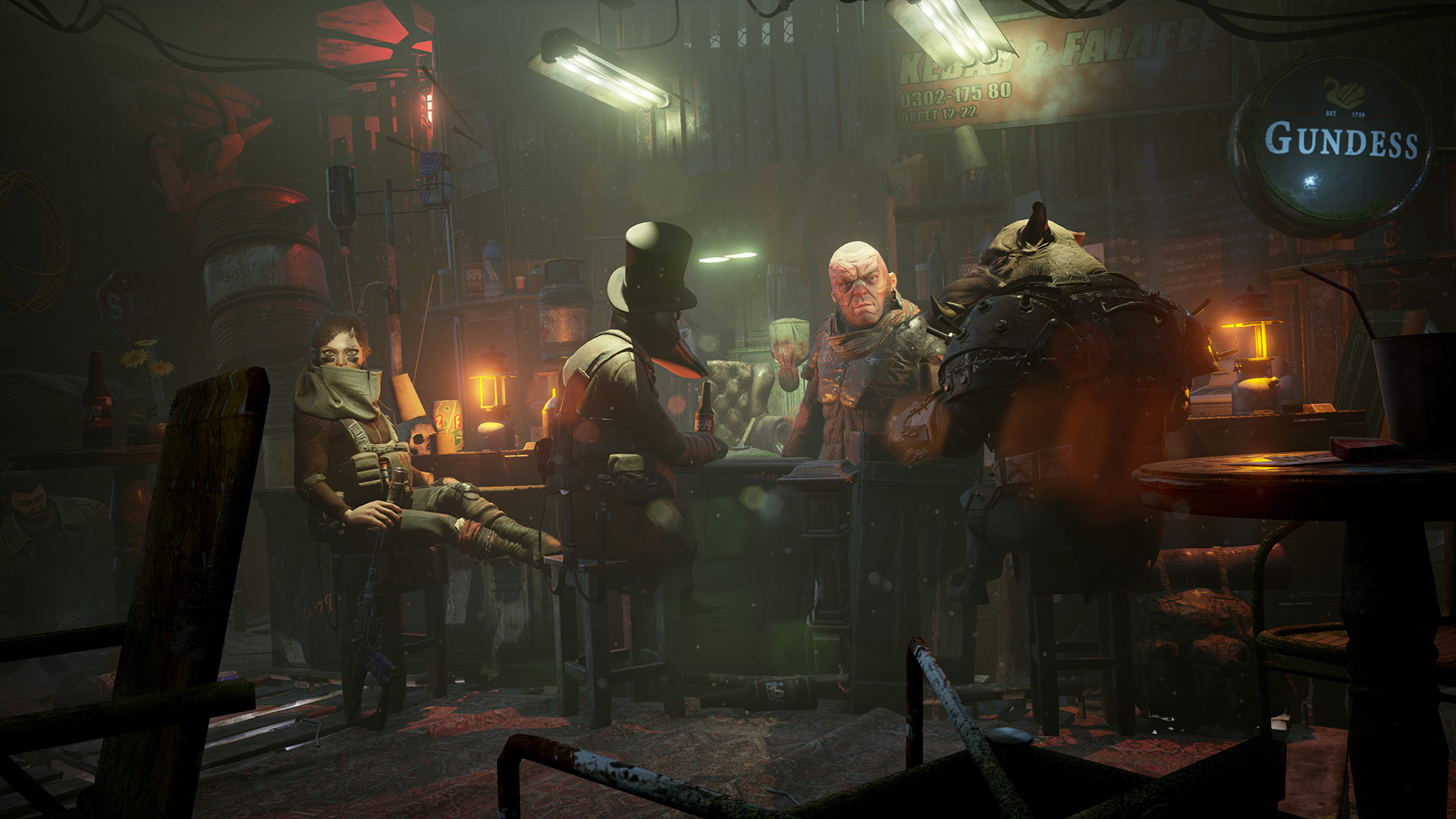Mutant was a Swedish table-top game from around the 1980s to early 1990s. An IP most would look over, developers The Bearded Ladies Consulting saw promise in it and created Mutant Year Zero: Road To Eden. If you wanted more story out of XCOM, and a more challenging but fair experience, this is one to watch.
I was invited to play the game behind closed doors at this year’s Gamescom. The developers gave us a brief overview of the game and it’s story.
The end of the world came and went, and humans are all gone. All that are left are mutant perversions of humans and animals alike. With your rag-tag team of freaks, you are searching for the fabled Eden- the last bastion and haven of the “ancients”.
While the full game will give you access to more characters, who were the mighty warriors I was exploring the wastes with? A duck with an attitude problem, a woman who’s almost human bar the rocky skin, and a boar that’s too old for this shit.
Rather than be told their personality, you actually get to see it in game. Dux and Borin (the duck and boar respectively) do not just shout out during combat, but will talk to each other as they explore the world. It makes them feel more alive, and offers a more natural exposition for the player.
My only qualm thus far is that Dux and Borin had very strong personalities, while Selma (the almost-human) seemed the weakest overall. “The-only-normal-one” tends to be the default for the party leader in a lot of RPGs, but in this case I feel it was more due to the other party members having more to say.
The gameplay is a more stealth focused XCOM. The development team have an impressive pedigree behind them, working on titles such as Hitman from IO Interactive and Payday for other studios. It certainly shows with the stealth system.
An out-and-out firefight is the last resort, as real time stealth is key for getting into position and ambushing your foes. Ambush attacks like this usually kill enemies in one shot. Though if you are using certain weapons, the noise will attract foes anyway.
While walking around in real time, you can break-up your squad and get them to stand in position- even behind cover. This lets you tailor make your ambushes so you have the advantage and (if you’re lucky) can end it in one fell swoop.
I initially had reservations about mixing real-time stealth with turn based combat. I can happily say my concerns were quickly quelled. Controls were responsive, and careful observation showed where enemies patrolled. There did not seem to be anything I could accidently knock over or interact with to blow my cover- something I am both a tad disappointed and very grateful for.
Stealth really is the best way to start a battle to avoid taking large amount of damage. While in XCOM characters can have quite high HP, the demo had allies and enemies with around 10 HP. Yet, I was getting hit very hard, losing over half my health at once.
The comparisons to XCOM do stop in one way, and for the better. The RNG for accuracy seems more fair. If you are standing point blank to an enemy who has not spotted you, you will get a 100% chance to hit. Enemies of course also get a fair-shake on accuracy, so using cover was a necessity.
Enemies I encountered could throw grenades that could ignite the ground, and even a friendly service robot that could heal and revive its allies. Thankfully, my own squad had plenty of bells and whistles thanks to their gear and abilities.
Your squad contains three people at anyone one time. The full game meanwhile will have more characters, each with their own play-style. Dux seemed to be more focused on long-range and stealth, Borin could tank and deal out damage, while Selena was more adaptable.
Each character has its own skill tree of mutations. As the character learns these new skills, they writhe and twist in agony. They grant skills such as flight to Dux, taunting for Borin, or super-human jumping for Selena.
Each of these characters had some slight variation within the possible builds for them. For example Borin acting as a tank that taunts damage from enemies, a full blown damage dealer that charges into the fray, or a combination of the two. Depending how this pans out for other characters and how many points you get to spend, I have high hopes for replayability.
Characters can also equip gear. Along with scavenged and bought armor and grenades, each character can carry up to two weapons. While it is advised to carry one “steath” weapon that makes little noise (such as Dux’ crossbow), there’s nothing to stop you carrying two noisy weapons for different abilities.
The weapons I had access to had properties beyond causing damage. Chances to knock my enemies prone, crit chance, damage type, and so on. I also found a weapon as I played the demo, and got scrap parts that could be used to make new things back at the hub.
While I did not get access to the hub during the demo, I had a metric ton of scrap and weapon parts lying around to loot. I can understand why this is done rather than just as a form of currency dropped from battle, as it encourages exploration and conditions you to look in nooks and crannies for the times you get full-blown weapons and armor.
The developers also assured me that they wanted to prevent punishing the player with useless shops. They assured me that the shop shall be useful right up to the end of the game with useful gear to buy.
Another method they implemented to prevent frustration was that there is no individual levelling for active party members, to prevent someone falling behind. The player can also swap out their three active party members at any time outside of combat.
The above is absolutely fantastic, as the game is brutal enough already when stealth fails or on rare occasions when it is not an option. Not to mention useless shops and under-leveled party members are sure to be a pet peeve of many who have had to endure it.
Speaking of difficulty, the developers also informed me the difficulty of the game scales by how healing a revival works, as well as hard-mode having additional enemies. In addition “Casais Mode” (named after one of the developer’s deep love of a serious challenge) is this game’s “Iron Man” mode, with perma-death for characters.
Iron Man mode works for XCOM due to being able to build a huge roster of characters to use. A few losses can be acceptable, depending on when and who. Without knowing how many party-members you can get, I do have some concerns that losing any character may be too brutal. But, the rest of the game’s balance leaves me with no such fears.
While dingy and dark as you’d expect the post-apocalypse to be, the scrap-and-junk weapons look great. Same as the characters themselves, with the animal companions still looking like they belong despite all logic. Think Beyond Good and Evil and less the live-action Howard the Duck movie.
The voice acting for the characters is also well done. The temptation to do a pseudo animal-impression with the animal mutants have been avoided, and focus on good voice acting comes across. They lend credibility to the personalities and banter very well.
Mutant Year Zero: Road to Eden is a little hard to judge on one demo alone. I am begging to know more about the world, the characters, the gear I can earn, and how the game will be several hours in. The Bearded Ladies should be proud of themselves, they have left me wanting more.
Mutant Year Zero: Road to Eden is launching for Windows PC, PlayStation 4, and Xbox One on December 4th of this year.
